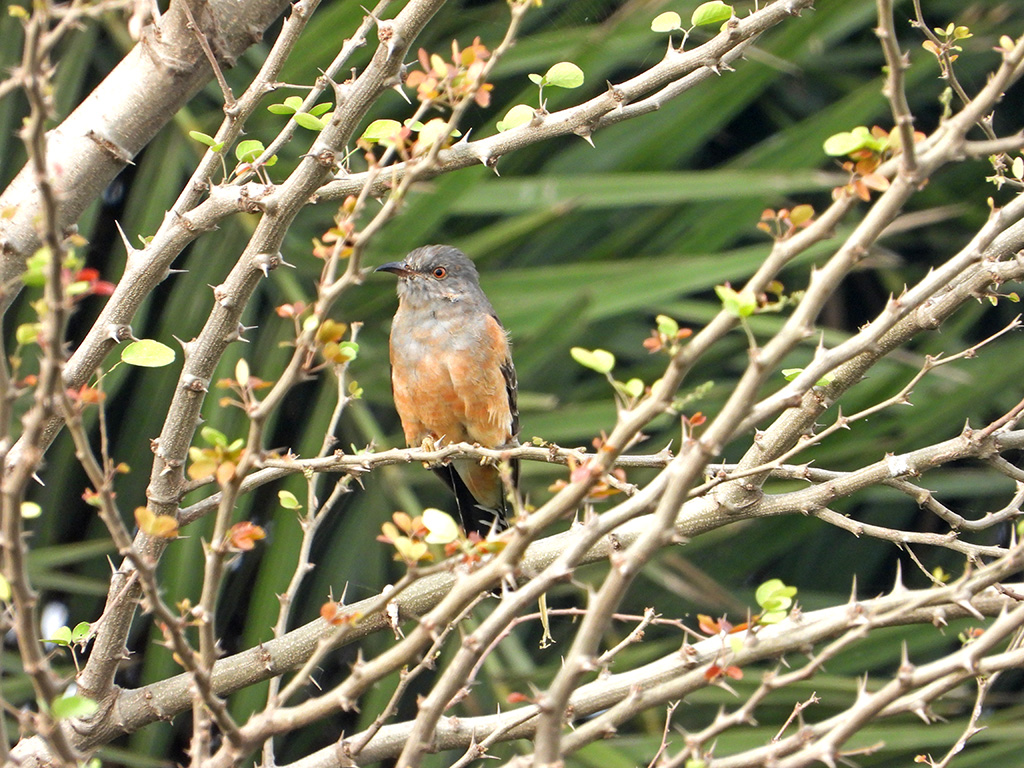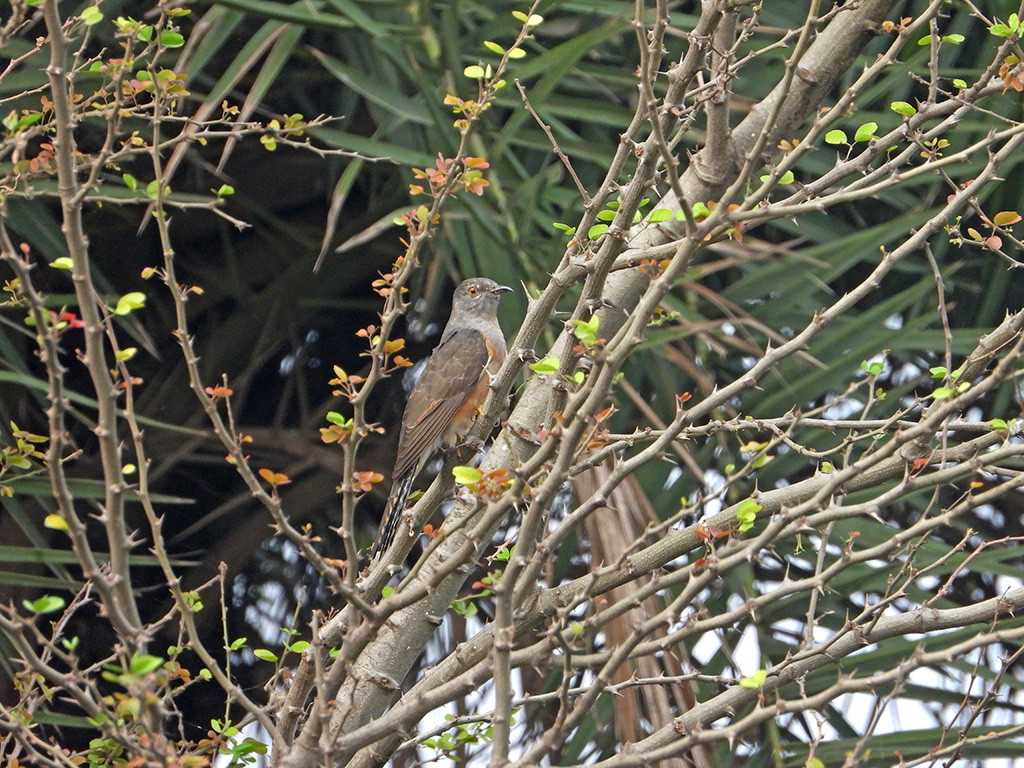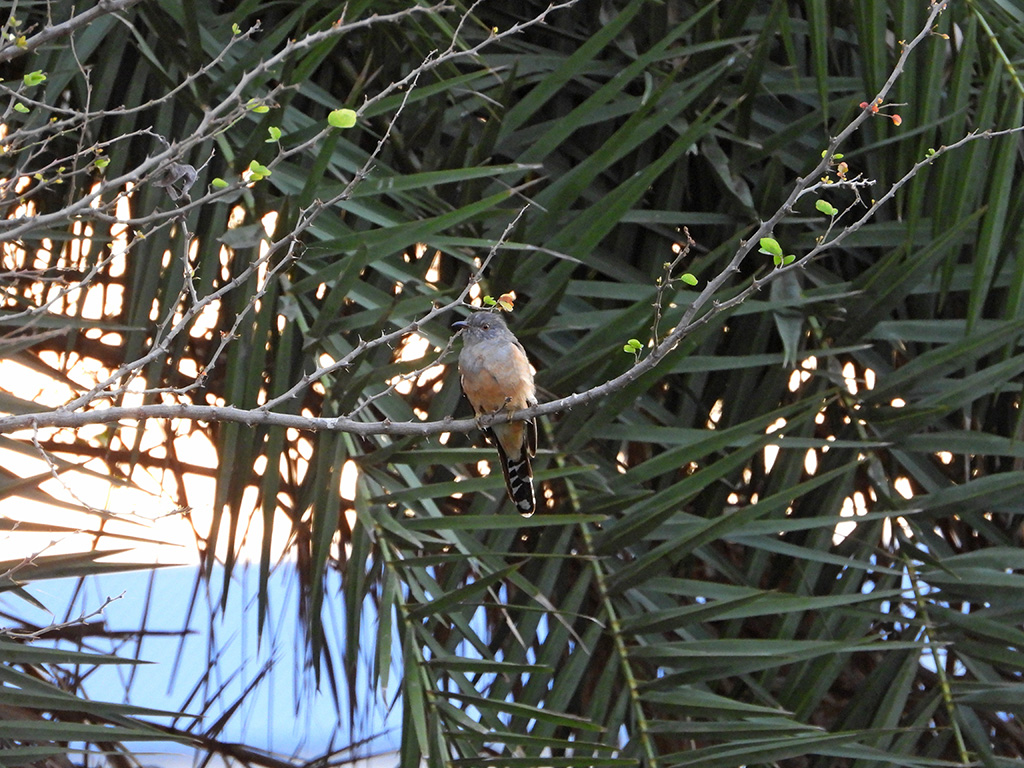| IUCN (International Union for Conservation of Nature): | Least Concern
|
|---|
| Approximate size(adult): | About 21–24 cm in length. The male has a grey head, chest, and upperparts, with rufous underparts and a long barred tail. Females are more rufous-brown above with faint barring and buffy underparts.
|
|---|
| Resident/ Migrate from: | Mostly a resident species across tropical Asia, though some populations in northern regions are partially migratory.
|
|---|
| Migrate to: | Birds from northern areas (like China and northern India) may move southwards to Southeast Asia during winter.
|
|---|
| Breeding season: | Typically March to August in South Asia and Southeast Asia. Being a brood parasite, it lays eggs in the nests of other small birds such as prinias, tailorbirds, and cisticolas.
|
|---|
| Breed in: | Found breeding in open woodland, scrub, forest edges, and gardens — areas with abundant host species.
|
|---|
| Habitat: | Prefers light forests, bamboo groves, gardens, plantations, and scrublands. Often seen singly, perching on exposed branches while calling its distinctive plaintive, whistling note.
|
|---|
| Diet: | Mainly insectivorous, feeding on caterpillars, grasshoppers, beetles, and other small insects. Occasionally takes small berries. Forages among foliage or makes short flights to catch prey.
|
|---|















